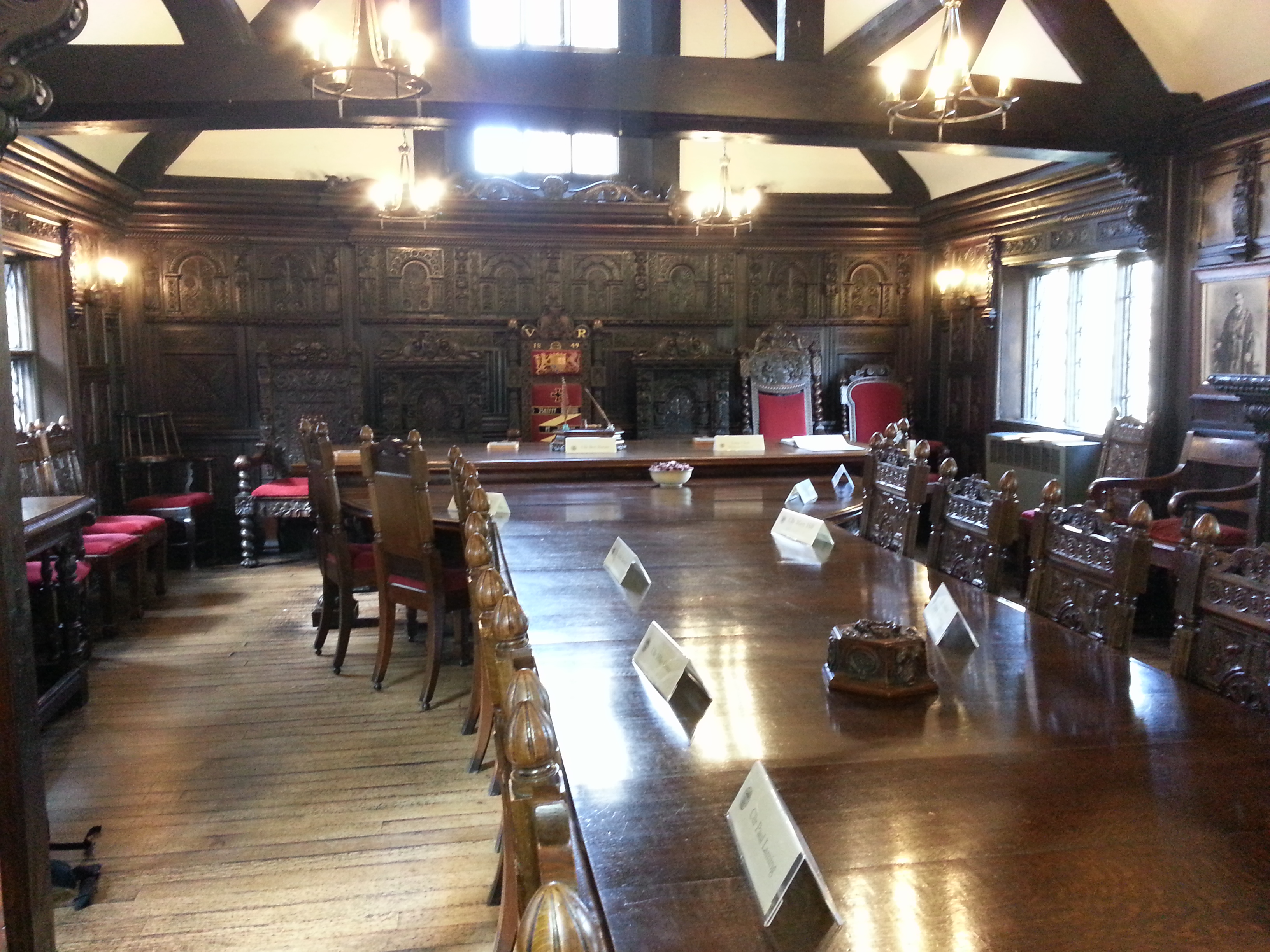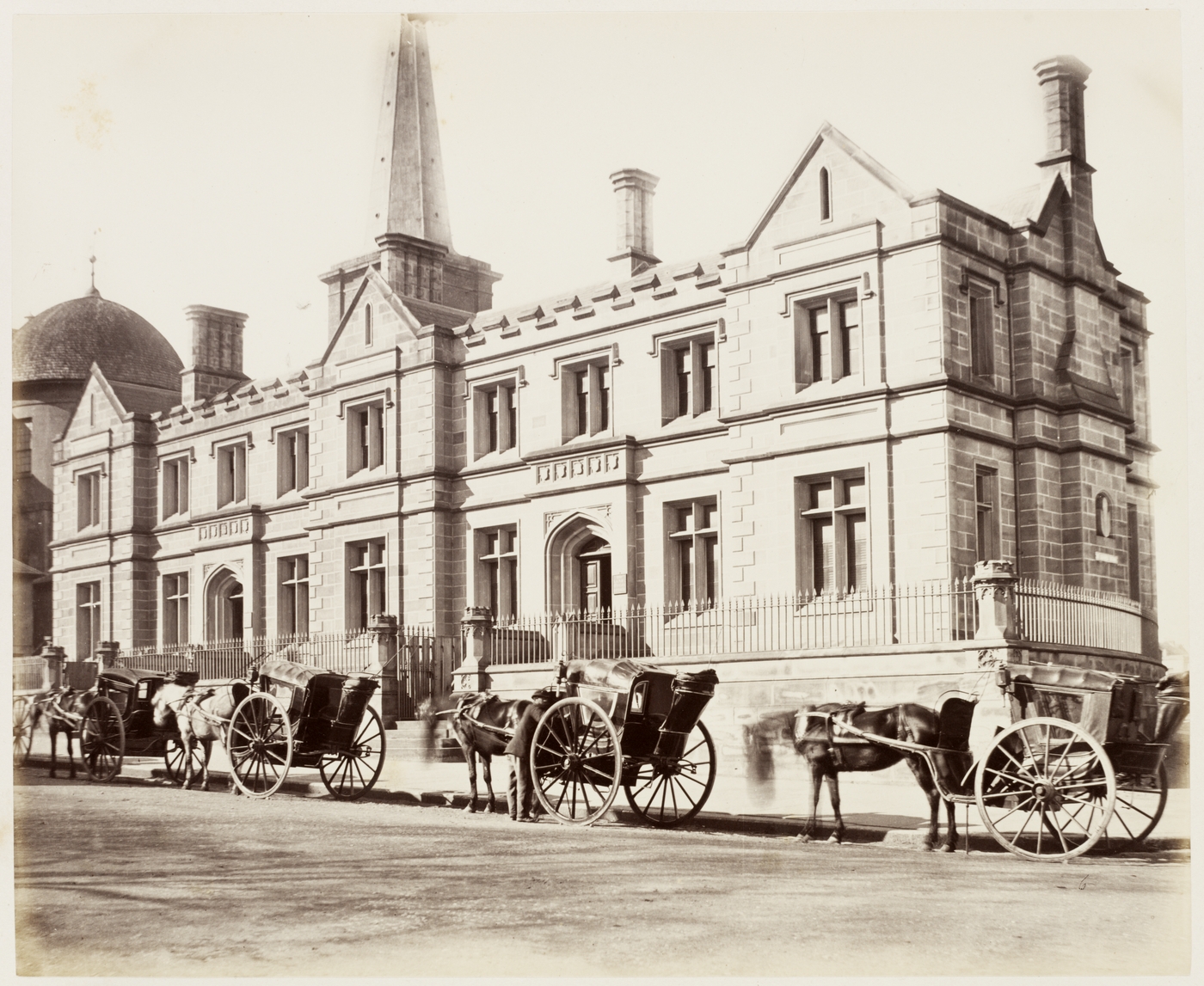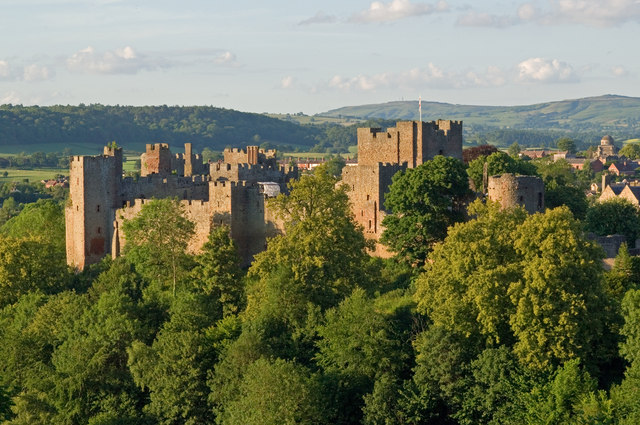|
Shropshire Archives
Shropshire Archives is located in Shrewsbury, England, and is the archives and local studies service for the historic county of Shropshire, which includes the borough of Telford and Wrekin. It preserves and makes accessible documents, books, maps, photographs, plans and drawings relating to Shropshire and its people dating from the early 12th to the 21st century. Shropshire Archives is funded by Shropshire Council and Telford and Wrekin Borough Council and is supported by an active friends organisation - the Friends of Shropshire Archives. The service has attracted external funding from bodies such as the Heritage Lottery Fund and the Arts Council. History In 1995 the County Record Office and Local Studies Library were brought together in a purpose built building just off Castle Gates in Shrewsbury town centre. From 1995 to 2003, the building was known as the Shropshire Records and Research Centre. After consultation, in 2003 the name was changed to "Shropshire Archives ... [...More Info...] [...Related Items...] OR: [Wikipedia] [Google] [Baidu] |
Shrewsbury
Shrewsbury ( , also ) is a market town, civil parish, and the county town of Shropshire, England, on the River Severn, north-west of London; at the 2021 census, it had a population of 76,782. The town's name can be pronounced as either 'Shrowsbury' or 'Shroosbury', the correct pronunciation being a matter of longstanding debate. The town centre has a largely unspoilt medieval street plan and over 660 listed buildings, including several examples of timber framing from the 15th and 16th centuries. Shrewsbury Castle, a red sandstone fortification, and Shrewsbury Abbey, a former Benedictine monastery, were founded in 1074 and 1083 respectively by the Norman Earl of Shrewsbury, Roger de Montgomery. The town is the birthplace of Charles Darwin and is where he spent 27 years of his life. east of the Welsh border, Shrewsbury serves as the commercial centre for Shropshire and mid-Wales, with a retail output of over £299 million per year and light industry and distribution centre ... [...More Info...] [...Related Items...] OR: [Wikipedia] [Google] [Baidu] |
Much Wenlock
Much Wenlock is a market town and parish in Shropshire, England, situated on the A458 road between Shrewsbury and Bridgnorth. Nearby, to the northeast, is the Ironbridge Gorge, and the new town of Telford. The civil parish includes the villages of Homer (1 mile north of the town), Wyke (2 miles northeast), Atterley (2 miles southeast), Stretton Westwood (2 miles southwest) and Bourton (3 miles southwest). The population of the civil parish, according to the 2001 census, was 2,605, increasing to 2,877 at the 2011 Census. Notable historic attractions in the town are Wenlock Priory and the Guildhall. The Wenlock Olympian Games established by William Penny Brookes in 1850 are centred in the town. Brookes is credited as a founding father of the modern Olympic Games, and one of the London 2012 Summer Olympics mascots was named Wenlock after the town. Toponym Much Wenlock is historically the chief town of the ancient borough of Wenlock. "Much" was added to distinguish it from ... [...More Info...] [...Related Items...] OR: [Wikipedia] [Google] [Baidu] |
Archives In Shropshire
An archive is an accumulation of historical records or materials – in any medium – or the physical facility in which they are located. Archives contain primary source documents that have accumulated over the course of an individual or organization's lifetime, and are kept to show the function of that person or organization. Professional archivists and historians generally understand archives to be records that have been naturally and necessarily generated as a product of regular legal, commercial, administrative, or social activities. They have been metaphorically defined as "the secretions of an organism", and are distinguished from documents that have been consciously written or created to communicate a particular message to posterity. In general, archives consist of records that have been selected for permanent or long-term preservation on grounds of their enduring cultural, historical, or evidentiary value. Archival records are normally unpublished and almost alway ... [...More Info...] [...Related Items...] OR: [Wikipedia] [Google] [Baidu] |
Lilleshall
Lilleshall is a village and civil parish in the county of Shropshire, England. It lies between the towns of Telford and Newport, on the A518, in the Telford and Wrekin borough and the Wrekin constituency. There is one school in the centre of the village. The village dates back to Anglo-Saxon times, the parish church being founded by St Chad. It is mentioned in the Domesday Book. The Norman parish church of St Michael and All Angels is a grade I listed building. Local governance A civil parish was formed on 1 April 2015 from Lilleshall, Donnington and Muxton, though a previous parish also called "Lilleshall" existed. Layout There is a monument, a cricket club, a tennis club, a church and a primary school clustered around a bracken-covered hill named Lilleshall Hill. Lilleshall Abbey Lilleshall Abbey, some distance to the east of the village, was an Augustinian house, founded in the twelfth century, the ruins of which are protected by English Heritage. After the dissoluti ... [...More Info...] [...Related Items...] OR: [Wikipedia] [Google] [Baidu] |
Duke Of Sutherland
Duke of Sutherland is a title in the Peerage of the United Kingdom which was created by William IV in 1833 for George Leveson-Gower, 2nd Marquess of Stafford. A series of marriages to heiresses by members of the Leveson-Gower family made the Dukes of Sutherland one of the richest landowning families in the United Kingdom. The title remained in the Leveson-Gower family until the death of the 5th Duke of Sutherland in 1963, when it passed to the 5th Earl of Ellesmere from the Egerton family. The subsidiary titles of the Duke of Sutherland are: Marquess of Stafford (created 1786), Earl Gower (1746), Earl of Ellesmere, of Ellesmere in the County of Shropshire (1846), Viscount Trentham, of Trentham in the County of Stafford (1746), Viscount Brackley, of Brackley in the County of Northampton (1846), and Baron Gower, of Sittenham in the County of York (1703). The marquessate of Stafford, the earldom of Gower and the viscountcy of Trentham are in the Peerage of Great Britain, ... [...More Info...] [...Related Items...] OR: [Wikipedia] [Google] [Baidu] |
Hawkstone Park
Hawkstone Park is was a destination on the English Grand Tour and is a historic landscape park with pleasure grounds and gardens historically associated with Soulton Hall and Hawkstone Hall. It is located north east of the small village of Weston-under-Redcastle, near to Wem, in Shropshire, England. It is known for its follies. Park Today the park consists of of follies and landscaped parkland grounds and rocky outcrops, based around the ruins of the medieval Red Castle. A climax in the development of the landscape is considered to be associated with the work of Richard Hill (1655–1727), also known as 'The Great Hill', circa 1707. The follies, estate and reputation were further enhanced by his nephew and heir Sir Rowland Hill, 1st Baronet Hill of Hawkstone (1705–1783) and then Sir Richard Hill, 2nd Baronet (1733–1808) during the 18th century. The park endured a century of neglect and decay until an ongoing programme of restoration was started in 1990, enabl ... [...More Info...] [...Related Items...] OR: [Wikipedia] [Google] [Baidu] |
Attingham Park
Attingham Park is an English country house and estate in Shropshire. Located near the village of Atcham, on the B4380 Shrewsbury to Wellington road. It is owned by the National Trust. It is a Grade I listed building. Attingham Park was built in 1785 for Noel Hill, 1st Baron Berwick, who already owned a house on the site called Tern Hall. With money he inherited, along with his title, he commissioned the architect George Steuart to design a new and grander house to be built around the original hall. The new country house encompassed the old property entirely, and once completed it was given the name Attingham Hall. The Estate comprises roughly 4,000 acres, and the extensive 640 acres (270 hectares) of parkland and gardens of Attingham have a Grade II* Listed status. Over 510,000 people visited in 2020/21, placing it as the most popular National Trust property. Across the 640 acre parkland there are five Grade II* listed buildings, including the stable block, the Tern Lodg ... [...More Info...] [...Related Items...] OR: [Wikipedia] [Google] [Baidu] |
General Register Office
General Register Office or General Registry Office (GRO) is the name given to the civil registry in the United Kingdom, many other Commonwealth nations and Ireland. The GRO is the government agency responsible for the recording of vital records such as births, deaths, and marriages (or BDM), which may also include adoptions, stillbirths, civil unions, etc., and historically, sometimes included records relating to deeds and other property transactions. The director of a General Register Office is often titled Registrar General or Registrar-General. By country Australia The Australian states and territories have similar registries for birth, death and marriage, although their histories differ. These agencies are usually subordinate to the state Attorney-General Department or Department of Justice. The Australian Bureau of Statistics is responsible for collating the statistics based on these records. ACT: Until 1930, records were registered in the New South Wales Registry of B ... [...More Info...] [...Related Items...] OR: [Wikipedia] [Google] [Baidu] |
Microfiche
Microforms are scaled-down reproductions of documents, typically either films or paper, made for the purposes of transmission, storage, reading, and printing. Microform images are commonly reduced to about 4% or of the original document size. For special purposes, greater optical reductions may be used. Three formats are common: microfilm (reels), microfiche (flat sheets), and aperture cards. Microcards, also known as "micro-opaques", a format no longer produced, were similar to microfiche, but printed on cardboard rather than photographic film. History Using the daguerreotype process, John Benjamin Dancer was one of the first to produce microphotographs, in 1839. He achieved a reduction ratio of 160:1. Dancer refined his reduction procedures with Frederick Scott Archer's wet collodion process, developed in 1850–51, but he dismissed his decades-long work on microphotographs as a personal hobby and did not document his procedures. The idea that microphotography could be no ... [...More Info...] [...Related Items...] OR: [Wikipedia] [Google] [Baidu] |
King's Shropshire Light Infantry
The King's Shropshire Light Infantry (KSLI) was a light infantry regiment of the British Army, formed in the Childers Reforms of 1881, but with antecedents dating back to 1755. It served in the Second Boer War, World War I and World War II. In 1968, the four regiments of the Light Infantry Brigade (the KSLI, Somerset and Cornwall Light Infantry, King's Own Yorkshire Light Infantry and Durham Light Infantry) amalgamated to form The Light Infantry, with the 1st KSLI being redesignated as the 3rd Battalion of the new regiment. History Formation The King's Light Infantry (Shropshire Regiment) was formed on 1 July 1881 as the county regiment of Herefordshire and Shropshire as part of the Childers Reforms. It was renamed as The King's (Shropshire Light Infantry) on 10 March 1882. The regiment was an amalgamation of the 53rd (Shropshire) Regiment of Foot and the 85th (King's Light Infantry) Regiment of Foot, which became the regular 1st and 2nd Battalions. The 1881 reforms also redesi ... [...More Info...] [...Related Items...] OR: [Wikipedia] [Google] [Baidu] |
Quarter Sessions
The courts of quarter sessions or quarter sessions were local courts traditionally held at four set times each year in the Kingdom of England from 1388 (extending also to Wales following the Laws in Wales Act 1535). They were also established in Scotland, Ireland and in various other dominions of the British Empire. Quarter sessions generally sat in the seat of each county and county borough, and in numerous non-county boroughs (mainly, but not exclusively, ancient boroughs), which were entitled to hold their own quarter sessions''Whitaker's Almanack'' 1968, pp 465-6. (see below), although some of the smaller boroughs lost their own quarter sessions in 1951 (see below). All quarter sessions were abolished in England and Wales in 1972, when the Courts Act 1971 replaced them and the assizes with a single permanent Crown Court. In Scotland, they survived until 1975, when they were abolished and replaced by district courts and later by justice of the peace courts. The quarter ses ... [...More Info...] [...Related Items...] OR: [Wikipedia] [Google] [Baidu] |
Ludlow
Ludlow () is a market town in Shropshire, England. The town is significant in the history of the Welsh Marches and in relation to Wales. It is located south of Shrewsbury and north of Hereford, on the A49 road which bypasses the town. The town is near the confluence of the rivers Corve and Teme. The oldest part is the medieval walled town, founded in the late 11th century after the Norman conquest of England. It is centred on a small hill which lies on the eastern bank of a bend of the River Teme. Situated on this hill are Ludlow Castle and the parish church, St Laurence's, the largest in the county. From there the streets slope downward to the rivers Corve and Teme, to the north and south respectively. The town is in a sheltered spot beneath Mortimer Forest and the Clee Hills, which are clearly visible from the town. Ludlow has nearly 500 listed buildings, including examples of medieval and Tudor-style half-timbered buildings. The town was described by Sir John Betjeman ... [...More Info...] [...Related Items...] OR: [Wikipedia] [Google] [Baidu] |







